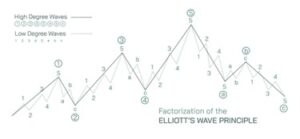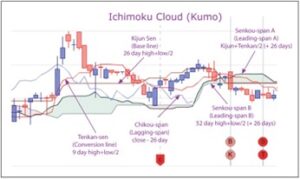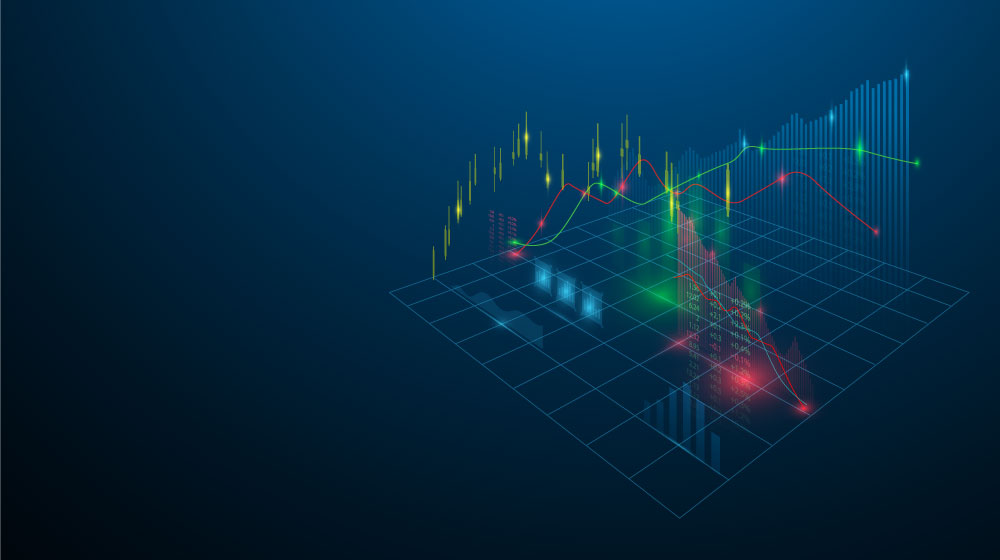Love trading forex? Awesome! But if you want to really ramp up your results, it might be time to level up your trading strategies.
As you transition from a beginner to an adept trader, mastering advanced trading strategies becomes essential. These strategies enhance your understanding of market dynamics and refine your trading executions.
But First, What Exactly is a Trading Strategy?
A trading strategy is essentially a set of rules you follow to manage your trades. It guides you on when to enter and exit trades, how to manage risks, and how to analyse market trends to make profits. A profitable forex strategy is crucial in the forex market because it gives you a clear plan and helps you trade with confidence.
Why Advanced Forex Strategies Matter
If you’re an experienced trader, stepping up to advanced trading strategies can really make a difference. Here’s why they’re so important:
Staying Flexible
The market is always moving—it never stands still! Advanced strategies give you the flexibility to adapt quickly. This means you can change your approach as market conditions shift, helping you stay on top of your game and seize trading opportunities as they arise.
Protecting Your Money
Let’s talk about keeping your hard-earned money safe. Advanced strategies often include strong risk management techniques, like utilising stop loss orders and position sizing. This is crucial because it helps you minimise losses and protect your investment, especially when the market takes unexpected turns.

Gaining an Edge
Advanced strategies can help you find opportunities that others might miss. They give you a better understanding of market trends and patterns, helping you make more informed decisions. But remember, no strategy works all the time, and results depend on the market and how you use them.
Types of Forex Trading Strategies
The forex market offers a variety of strategies that cater to different styles and goals. Each strategy comes with its own set of advantages and challenges.

Scalping
If you’re the type who likes quick action and can handle the pressure, scalping might be for you. This strategy focuses on making lots of trades based on tiny price changes. The idea is to grab small, quick profits that add up over time.
Pros: You can see results fast, and the frequent trading can quickly increase your profits.
Cons: It’s pretty intense! You need to watch the markets constantly, which can be stressful and exhausting.
Day Trading
This is for those who like to start and finish their trading activities within a single day. Day traders buy and sell during the day and close out their positions by the time the market shuts down, avoiding any risks that might come overnight.
Pros: You don’t have to worry about sudden market changes while you sleep, so it feels a bit safer in that regard.
Cons: It demands a lot of your time during trading hours and can rack up high transaction costs due to the frequent trading.
Swing Trading
Prefer a bit more breathing room? Swing trading allows swing traders to hold onto their trades for several days or weeks to capitalise on expected upward or downward market shifts.
Pros: It’s less hectic than day trading, and you can make significant gains if your predictions are right.
Cons: You’re still exposed to overnight and weekend market risks, which can sometimes bring surprises.
Position Trading
If you’re more of a marathoner than a sprinter, position trading could be appealing. This strategy involves holding your positions for weeks or months, aiming to benefit from major market trends.
Pros: It’s generally less stressful; you’re not glued to your screen all day, and you can plan your moves more thoughtfully.
Cons: It requires a lot of patience and a deep understanding of market fundamentals to recognise and act on long-term trends.
How to Choose the Right Strategy

Whether you’re searching for the best forex trading strategy that suits your quick decision-making or the best forex strategy for a more analytical approach, it’s all about finding what works best for you.
- Match the strategy to your personal trading style. Are you more of a quick decision-maker, or do you prefer to take your time to analyse?
- Consider how much risk you are comfortable taking. Some strategies involve higher risks that could potentially offer higher returns.
- Look at how much time you can dedicate to trading. Some strategies require constant market monitoring, while others need a check-in only now and then.
- Align your strategy with your financial objectives. Are you looking for steady income, or are you more interested in capital growth?
- Try out different strategies to see which ones feel right. It’s like test-driving cars before you pick the one you want to buy.
- Use historical data to test how the strategies would have performed in the past. This can give you an idea of what to expect and help refine your approach.
- Choose a strategy that feels comfortable and fits your individual trading goals and personality.
Advanced Forex Trading Techniques

Hedging Forex
Think of hedging as your safety net in forex trading. It’s a way to protect your investments from big swings in the market. You can hedge by using different financial instruments like options or futures, or even by opening positions in currency pairs that move in opposite directions.
How it Works
For example, if you have a long position in EUR/USD and you’re worried about potential losses, you might take a short position in USD/CHF. If EUR/USD goes down, the gains from the USD/CHF could help offset your losses.
Pros: Lowers risk and protects against adverse movements.
Cons: Might limit your profits, incurs costs, and needs constant oversight.
Scalping
Scalping is perfect if you love fast-paced trading. It’s all about making quick profits from small price changes, and it requires making many trades throughout the day.
Key Techniques:
- Some forex traders use advanced algorithms to trade extremely quickly.
- Scalpers usually trade pairs with small spreads to maximise their profit on small price movements.
- Quick trade execution is crucial for scalping to work effectively.
Example:
A scalper might buy EUR/USD at 1.1200 and sell it at 1.1202 just seconds later, doing this many times a day to rake in profits.
Pros: Potential for quick profits; minimal exposure to long-term market risks.
Cons: Demanding and stressful; high transaction costs.
Position Trading
If you’re more laid-back and prefer to look at the bigger picture, position trading might be your style. This strategy involves holding onto your trades for weeks, months, or even longer, based on thorough market analysis.
How It Works:
A position trader often use a mix of technical and fundamental analysis to predict long-term market movements.
Example:
You might buy USD/JPY anticipating long-term economic growth in the US and hold onto it, hoping to profit from the expected upward trend.
Pros: Less stressful; doesn’t require constant market monitoring.
Cons: Needs lots of patience and a deep understanding of market drivers.
Nonfarm Payrolls (NFP) Trading
NFP trading revolves around trading on the expectation of market reactions to the US nonfarm payrolls report—a key economic indicator that can cause significant market swings.
Techniques:
Volatility Orders – These are placed to capitalise on the expected high volatility when NFP data is released.
Straddle Strategies – Setting up buy and sell orders around the current price to profit whichever way the market jumps after the news.
Economic Calendar Monitoring – Keeping an eye on when the NFP will be released so you’re ready for action.
Pros: Offers opportunities to profit from major market moves.
Cons: High risk from volatility, potential for slippage, requires fast decision-making.
These advanced forex trading strategies have their own challenges and benefits. The right strategy depends on your trading style, the time you can dedicate, and how closely you can follow the market.
While these strategies can give you an advantage, they also require skill and discipline. If not used carefully, they can lead to big losses. Make sure you fully understand them and practice before using them in real trading.
Advanced Technical Analysis Tools

Technical analysis involves studying past market data, primarily price and volume, to forecast future price movements. Advanced technical analysis tools can provide significant insights into market trends, helping traders make informed decisions. Here, we explore three sophisticated tools: Fibonacci Retracement, Elliott Wave Theory, and Ichimoku Cloud.
Fibonacci Retracement
Fibonacci Retracement is a powerful tool used by traders to identify potential support and resistance levels based on the Fibonacci sequence. The key Fibonacci ratios used in trading are 23.6%, 38.2%, 50%, 61.8%, and 78.6%.
How It Works
Fibonacci Retracement levels are plotted by selecting two extreme points, usually a high and a low. The tool then automatically generates the key Fibonacci levels between these points. Traders use these levels to identify potential reversal points, entry points, and stop-loss levels.
Example
Suppose the price of EUR/USD rises from 1.1000 to 1.2000. A Fibonacci retracement is applied to this upward movement. The key retracement levels would be:
- 23.6% retracement at 1.1764
- 38.2% retracement at 1.1620
- 50% retracement at 1.1500
- 61.8% retracement at 1.1380
Traders might place buy orders near these levels, anticipating a bounce.
Pros: Identifies potential support and resistance levels, provides clear entry and exit points.
Cons: Not always accurate, effectiveness varies with market conditions.
Elliott Wave Theory
Elliott Wave Theory, developed by Ralph Nelson Elliott, is based on the idea that financial markets move in predictable cycles or waves. These waves reflect the collective investor psychology.
How It Works
The theory identifies two types of waves: impulse waves, which move in the direction of the trend, and corrective waves, which move against the trend. An impulse wave consists of five waves (three in the direction of the trend and two corrections), while a corrective wave consists of three waves.
Example
In a bullish market, an Elliott Wave sequence might look like this:
Wave 1: Initial upward movement
Wave 2: Minor pullback
Wave 3: Strong upward movement
Wave 4: Another pullback
Wave 5: Final push upwards

After these five waves, a correction (A-B-C pattern) typically follows.
Pros: Helps forecast future market movements, provides a framework for understanding market trends.
Cons: Requires significant skill and experience to apply correctly, can be subjective.
Ichimoku Cloud
The Ichimoku Cloud, also known as Ichimoku Kinko Hyo, is a comprehensive technical indicator developed by Goichi Hosoda. It provides insights into trend direction, momentum, and support/resistance levels, offering a holistic view of the market.
How It Works
The Ichimoku Cloud consists of five lines:

Tenkan-sen (Conversion Line): Calculated as the average of the highest high and the lowest low over the past nine periods.
Kijun-sen (Base Line): Calculated as the average of the highest high and the lowest low over the past 26 periods.
Senkou Span A (Leading Span A): The average of the Tenkan-sen and Kijun-sen, plotted 26 periods ahead.
Senkou Span B (Leading Span B): The average of the highest high and the lowest low over the past 52 periods, plotted 26 periods ahead.
Chikou Span (Lagging Span): The closing price plotted 26 periods behind.
The space between Senkou Span A and Senkou Span B forms the “cloud,” which indicates potential support and resistance zones.
Example
If the price is above the cloud, it suggests an uptrend. Conversely, if the price is below the cloud, it indicates a downtrend. The cloud’s thickness represents the strength of the trend, with thicker clouds indicating stronger trends.
Pros: Provides a comprehensive view of market trends, identifies support and resistance levels, and signals potential trend reversals.
Cons: Can be complex to interpret, requires practice to use effectively.
Technical analysis can be a valuable tool, but it’s not foolproof. Markets can change unexpectedly, and past trends don’t always predict future movements. Consider combining technical analysis with other methods and stay adaptable in your trading approach.
Fundamental Analysis in Forex Trading
When trading forex, it’s crucial to understand fundamental analysis. This involves looking at economic data, interest rates, and significant global events to predict how they might affect currency values.
Here’s a breakdown of the main factors that forex traders consider:
Key Economic Indicators

Gross Domestic Product (GDP)
GDP is a measure of all the goods and services a country produces. If GDP is higher than expected, it usually means the economy is strong, and the currency might increase in value. If it’s lower, the economy might be struggling, which can decrease the currency’s value.
Inflation Rates
This measures how quickly prices for everyday items are rising. If prices rise moderately, it can be a good sign and might lead to higher interest rates, which attract investors. Very high inflation can be a problem as it might lower people’s buying power.
Interest Rate Decisions
Central banks adjust interest rates to control economic growth. Higher interest rates generally attract investors looking for good returns, increasing the currency’s value. Lower rates might do the opposite, making the currency less appealing.
Unemployment Rates
This shows the percentage of people looking for work. High unemployment can indicate economic problems and might lower the currency’s value. Low unemployment suggests a strong economy, potentially boosting the currency.
Trade Balances
This is the difference between what a country exports and imports. A surplus, where exports exceed imports, can strengthen a currency. A deficit can weaken it.
Geopolitical Events
Political Stability
Countries with stable governments are more attractive to investors, which can strengthen their currency. Political unrest can make investors nervous, potentially weakening the currency.
Geopolitical Tensions
International conflicts or wars can lead to uncertainty in the markets. During such times, traders might move their investments to safer assets, impacting different currencies.
How to Conduct Fundamental Analysis in Forex Trading

Here’s how to go about fundamental analysis:
Gather Relevant Economic Data
Start by collecting data on key economic indicators like GDP, inflation, interest rates, and unemployment. You can find this information through government reports, reputable financial news websites, and economic calendars that keep track of such updates.
Analyse the Impact of News Releases
Keep an eye on how new economic reports or news releases affect currency values. For instance, if a country reports higher than expected GDP growth, it’s often good news for its currency, potentially making it more valuable compared to others.
Incorporate Findings into Your Trading Strategy
Use the data you’ve gathered and your analysis to shape your trading decisions. If the economic outlook seems positive, you might consider buying that currency. Conversely, if things look downturned, it might be time to sell.
Example: Analysing Interest Rate Decisions
Central banks like the US Federal Reserve or the European Central Bank often adjust interest rates to keep the economy balanced. Knowing when these banks are scheduled to meet and what decisions they might make can help you predict currency movements. For instance, if the Fed raises rates, the dollar usually strengthens. If they cut rates, the dollar might weaken.
Optimising Your Trading Performance
Keeping a detailed trading journal is important. It helps you track what works and what doesn’t by recording your trades, the reasoning behind them, and their outcomes. Analysing metrics like your win/loss ratio and average profits will guide you in tweaking your strategies for better results.
Staying Updated with Market Trends
To make informed decisions, stay on top of market trends and news. Use resources like Bloomberg, Reuters, Forex Factory, and economic calendars from sites like Investing.com and DailyFX. Following experienced traders on social media can also provide insights and tips.
Tools and Resources for Forex Traders
MetaTrader 5 (MT5), and cTrader offer excellent functionality for placing trades. At JP Markets, traders can trade using the MT5 platform, which is packed with tools designed to support their trading journey.
Tools like TradingView and NinjaTrader are great for advanced charting, while websites like BabyPips and Investopedia provide valuable resources for learning about forex trading.
Traders can also have peace of mind with JP Markets. It is authorised by the Financial Sector Conduct Authority (FSCA) as an Over-the-Counter Derivatives Provider. JP Markets ensures that all personal information and documents are stored securely in compliance with data protection regulations.
Explore advanced trading tools and strategies with JP Markets. Always trade responsibly and make sure you understand the risks involved.
Disclaimer:
Trading forex comes with risks, and you can lose more than you invest. Make sure you understand the risks fully and consider getting advice if you’re unsure.
Frequently Asked Questions (FAQ)
Q: What is a trading strategy?
A: It’s a set of rules to decide when to buy, sell, or hold currencies while managing risks.
Q: Why use advanced strategies?
A: They help you adapt to market changes, protect your money, and find more opportunities.
Q: What are examples of advanced strategies?
A: Scalping, swing trading, position trading, and hedging are common examples.
Q: How do I choose the right strategy?
A: Pick one that matches your trading style, risk comfort, and time availability. Try them in a demo account first.
Q: Do advanced strategies guarantee profits?
A: No. They improve your decision-making but don’t eliminate risks.
Q: Can beginners use advanced strategies?
A: Beginners should start simple and move to advanced strategies as they gain experience.
Q: What tools can I use?
A: Tools like MT5, Fibonacci retracement, and Ichimoku Cloud are great for advanced strategies.




